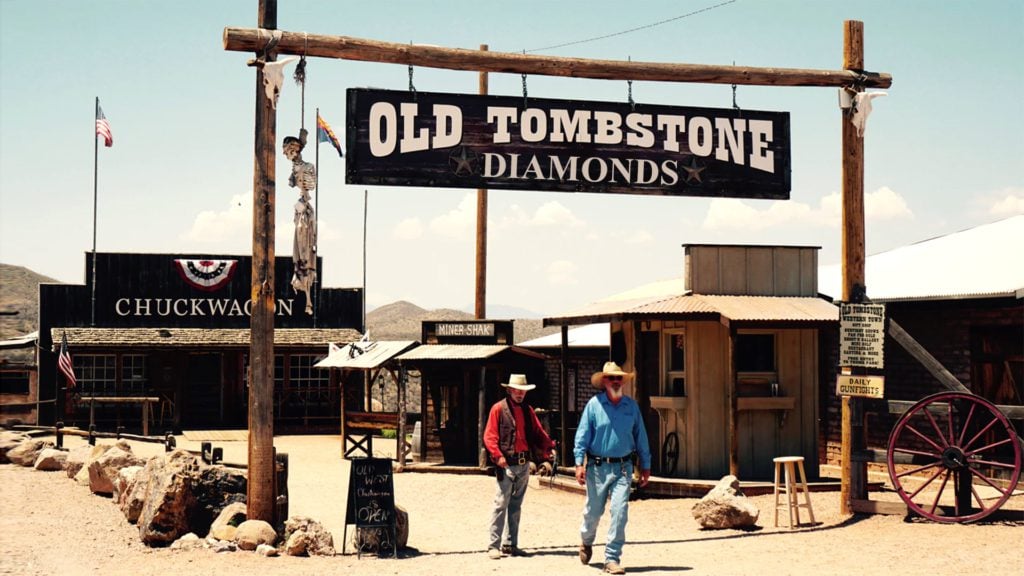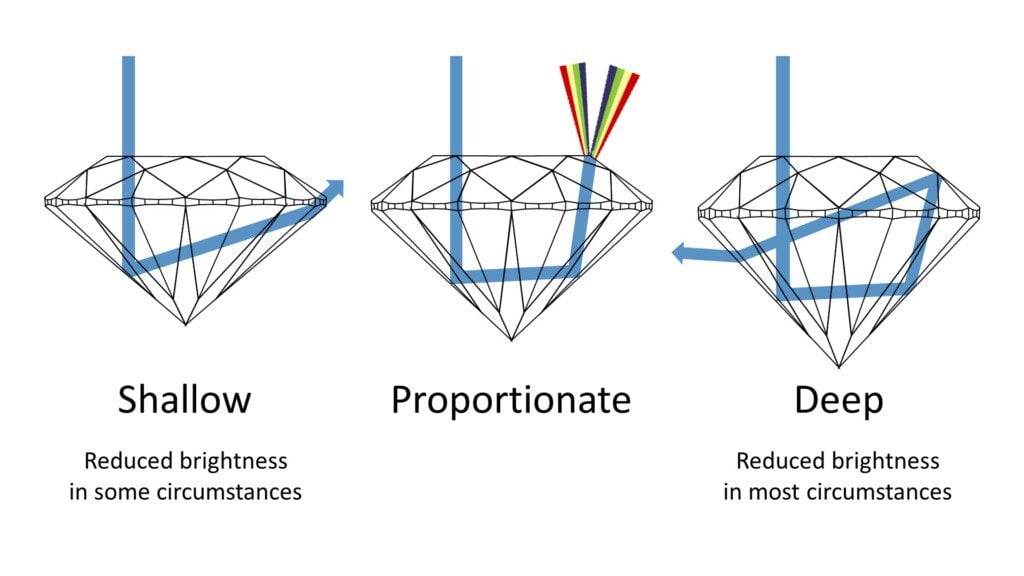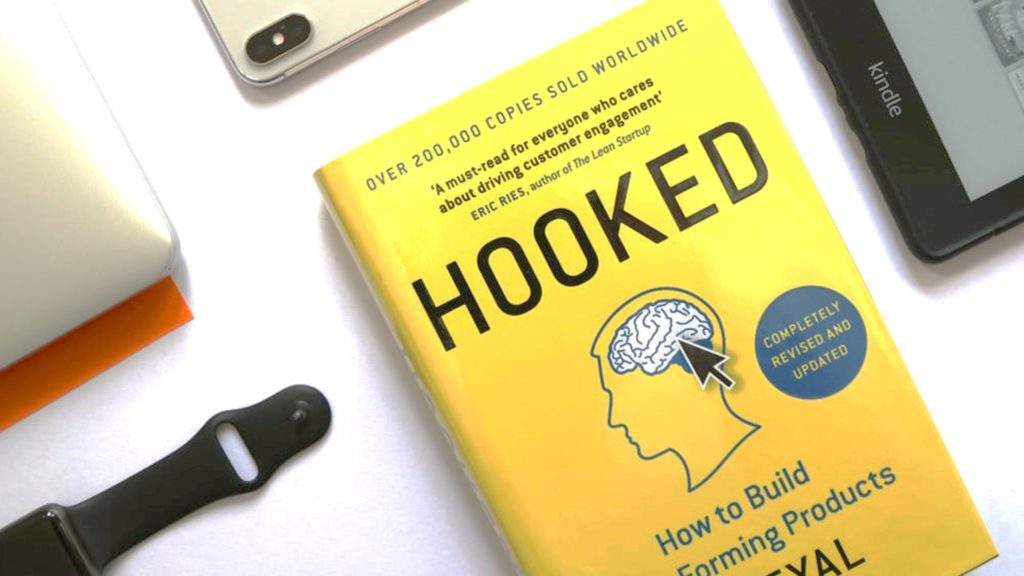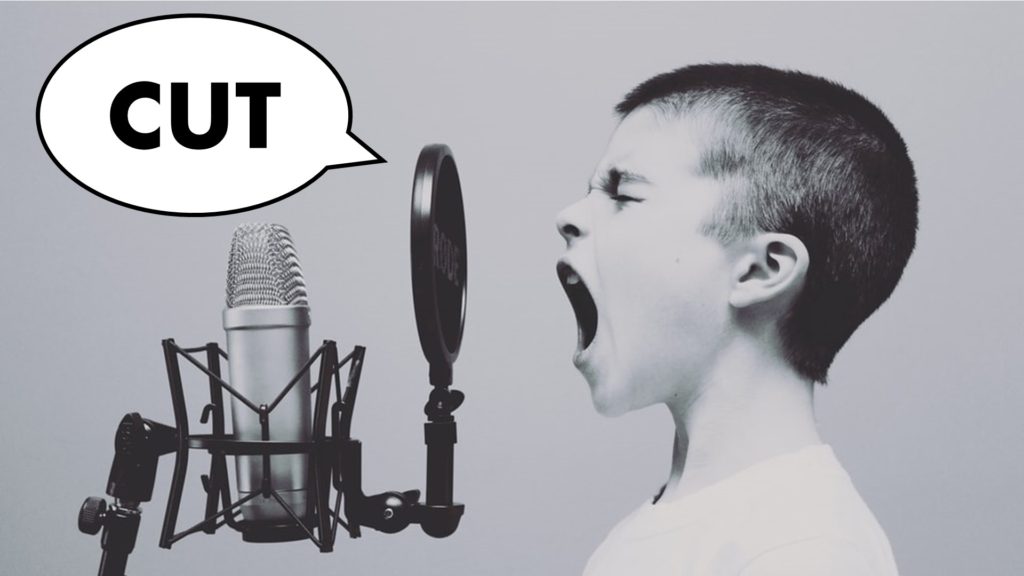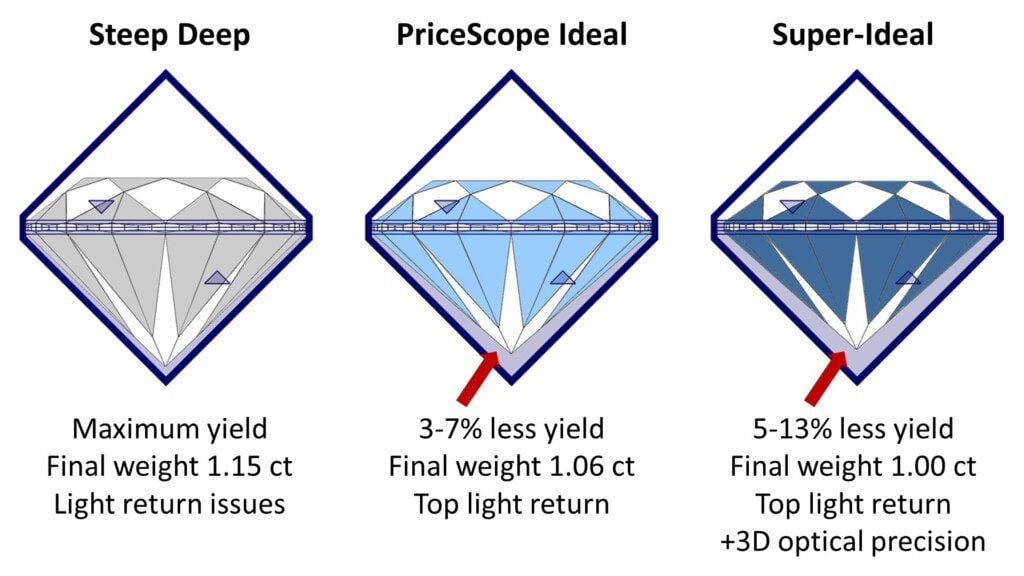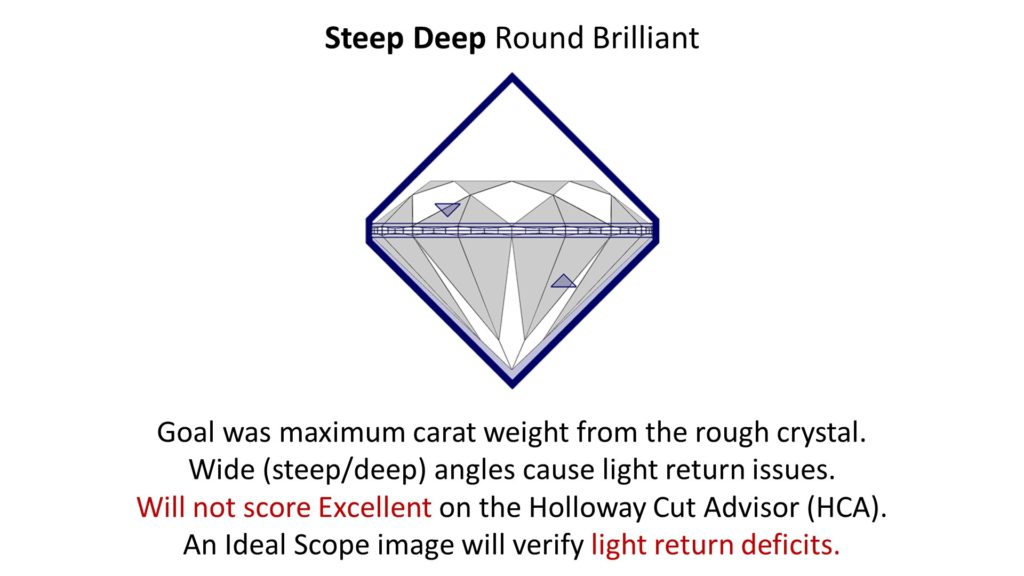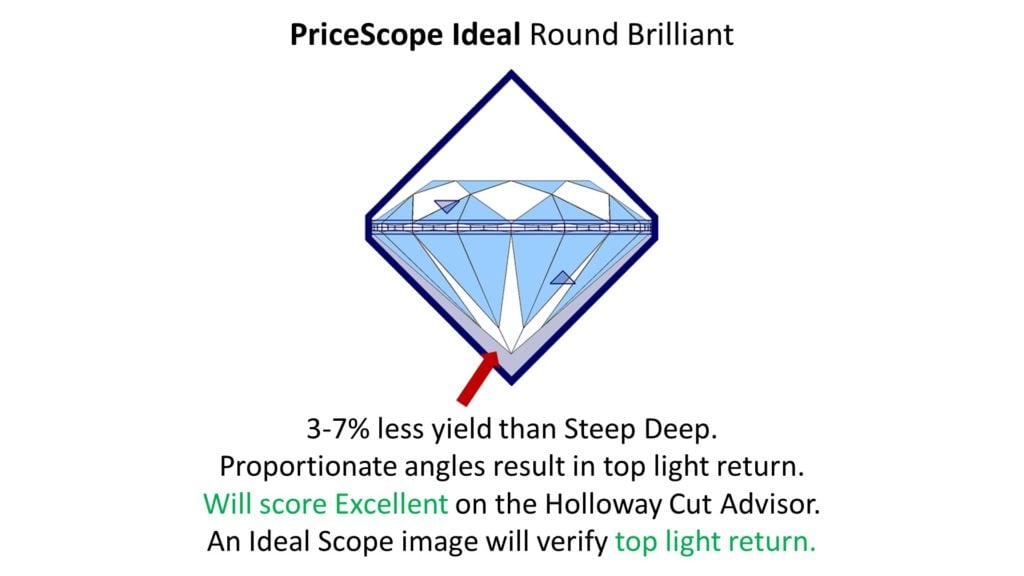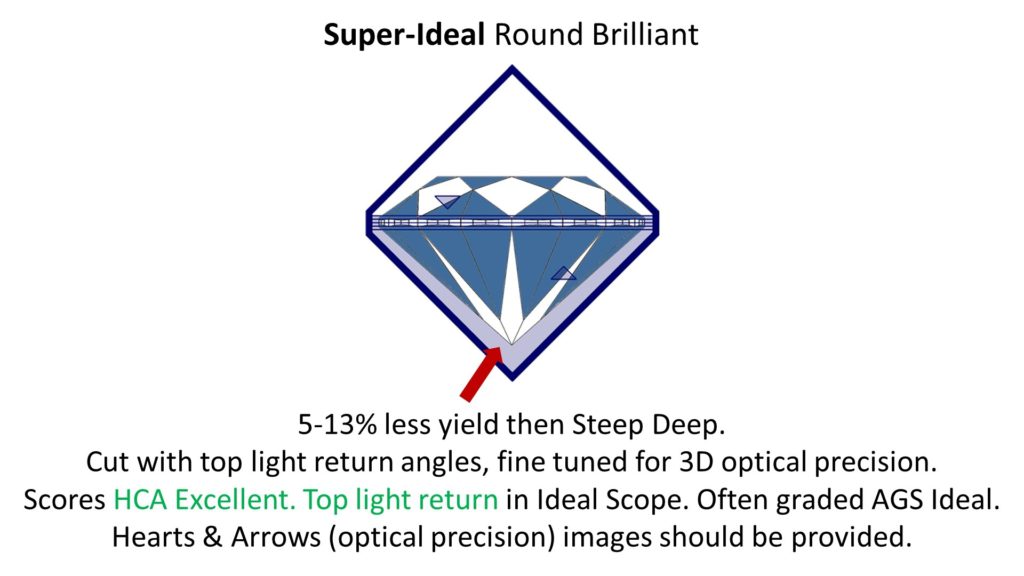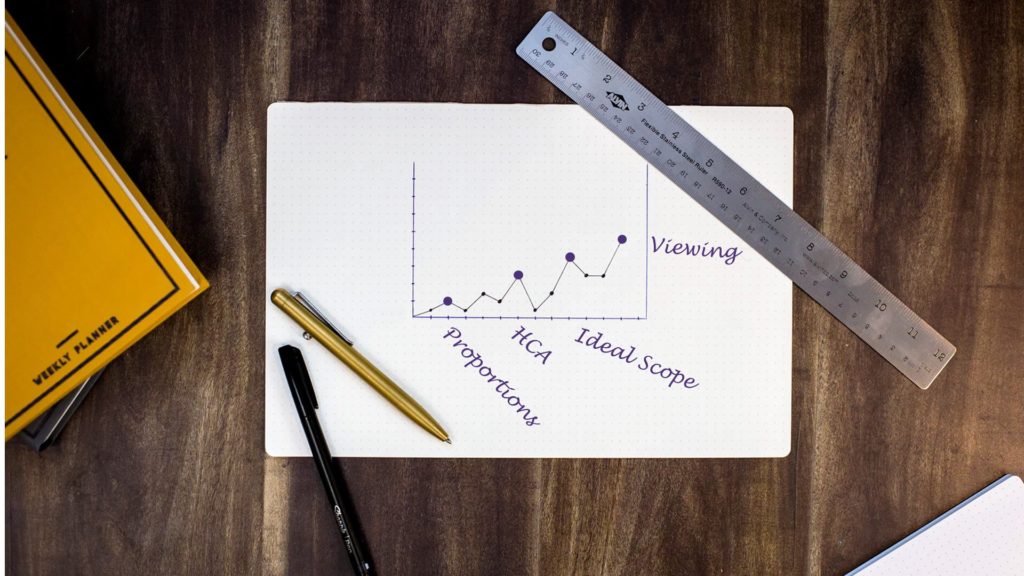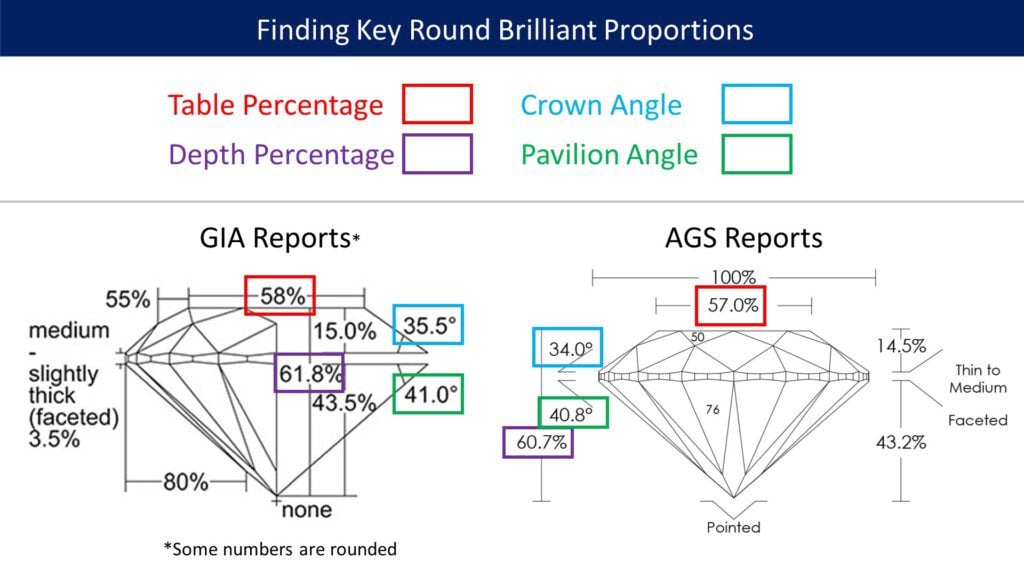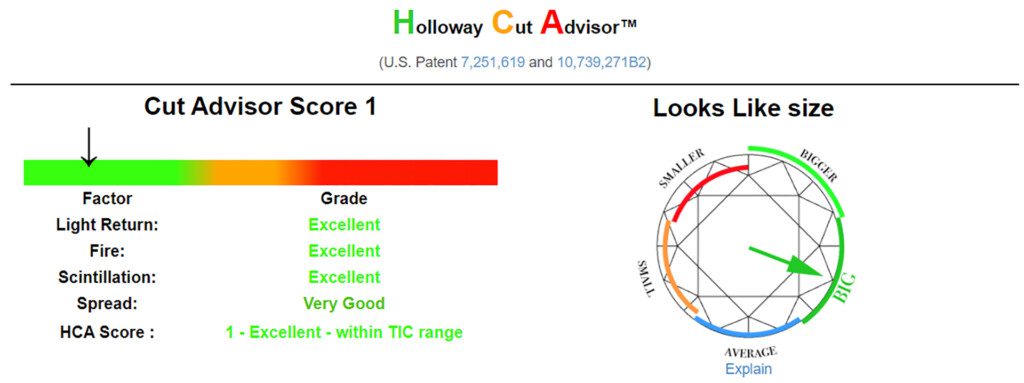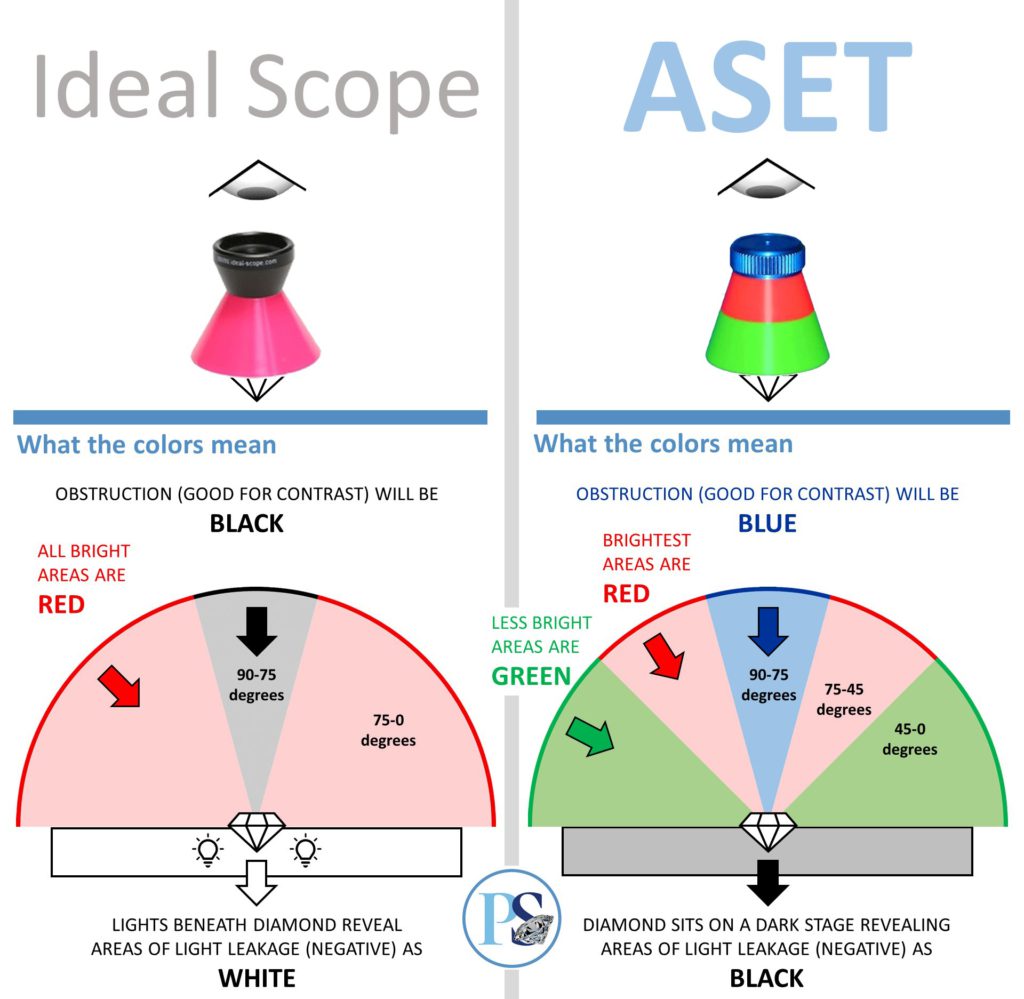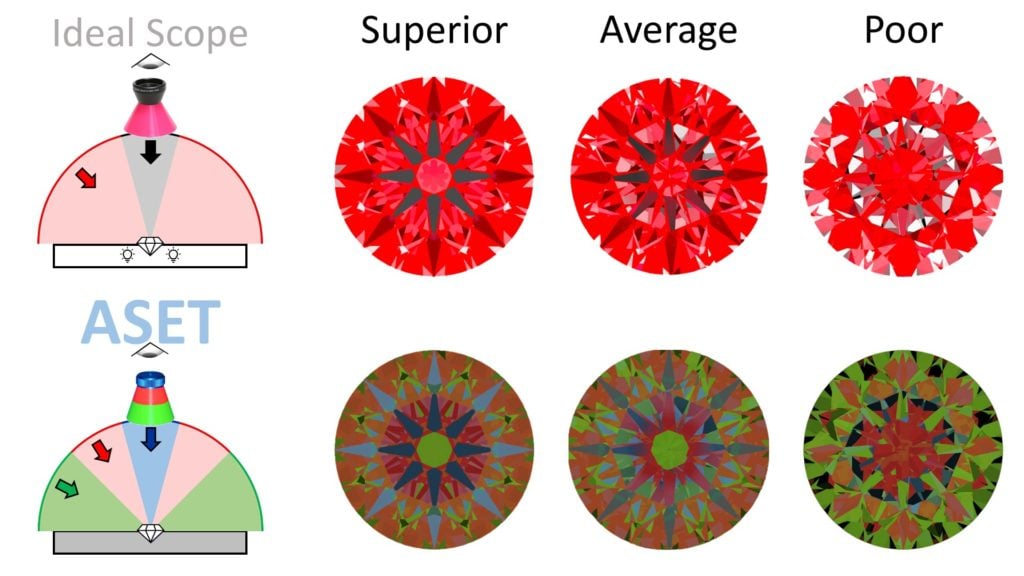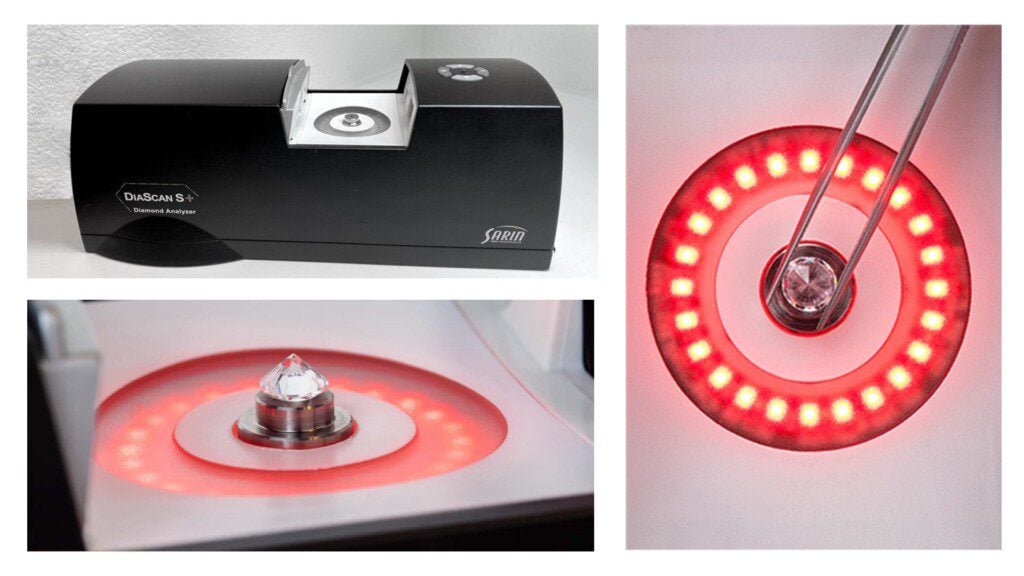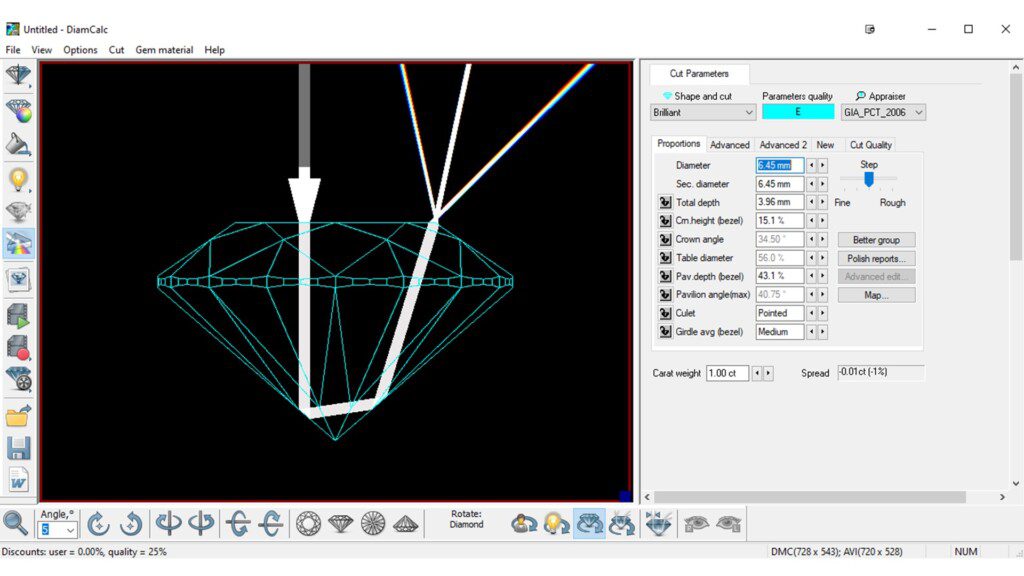Dual and Triple Light Maps
AGS offers “dual light map” and “triple light map” certificates, as seen below. In these cases, an ASET image is rendered for the bottom of the diamond. The only purpose of that rendering is to provide an impression of 3D optical precision, also known as “Hearts and Arrows.” While the 3D scan computer-generated images can be very representative, a diamond’s optical precision is best judged with actual photos or in-person viewing.
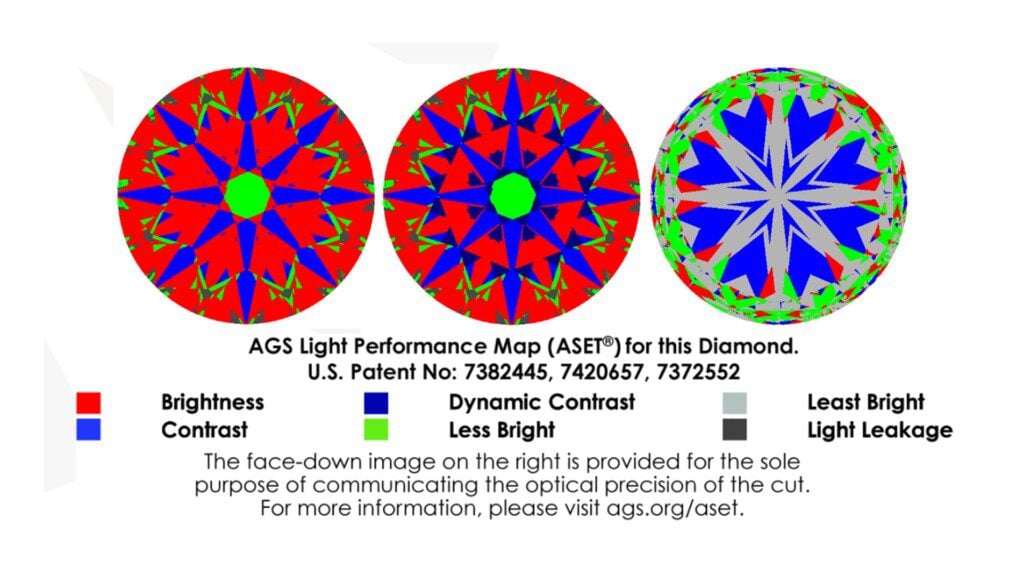
You can read more about optical precision on our Hearts and Arrows Diamonds page.
DiamCalc Software
DiamCalc is a system for polished gemstone modeling and design. The software can be used to generate a variety of photorealistic diamond images and videos, including performance scope (i.e. Ideal Scope, ASET) and optical precision scope (i.e. Hearts and Arrows) simulations. Professional versions of DiamCalc feature a ray tracing engine which may be used to design theoretical diamonds, in the same manner as architects use CAD to design and assess buildings prior to construction.
PriceScope Pointer: Before using computer-generated images (CGI) for analysis it’s critical to know whether the images were generated by manual input or from a mechanical 3D scan of the diamond.
Computer Generated Images (CGI)
CGI can be produced in a variety of ways. How useful or accurate those images depends on whether they were generated from manual entry of facet-group averages, or generated from an actual mechanical scanner that measured the diamond in 3D.
1. CGI from manual input (not useful)
Computer-generated images (CGI) can be produced by manually entering numbers from a grading report into the software. When this methodology is not disclosed it’s misleading. When broad average numbers are entered the software simulates perfect 3D optical precision for the missing facets (which don’t exist in nature) and produces images based on a theoretically perfect, unrealistic diamond wireframe.
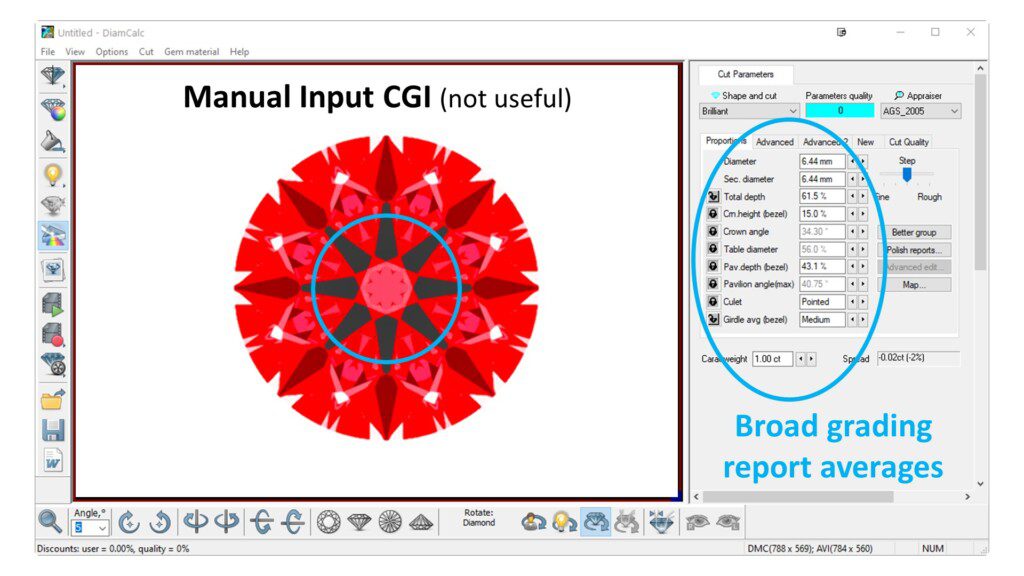
Note: Manual input of grading report averages can be useful for broad conclusions regarding overall light return versus light leakage. Such use should be clearly disclosed as a non-diamond-specific estimate.
2. Images rendered from a 3D Scan (useful)
Diamond 3D scans are useful for light performance assessment with ray tracing, as well as producing diamond-specific Ideal Scope and ASET CGI which are representative. Since all facets have been scanned in three dimensions the projections of light behavior within the diamond are accurate.
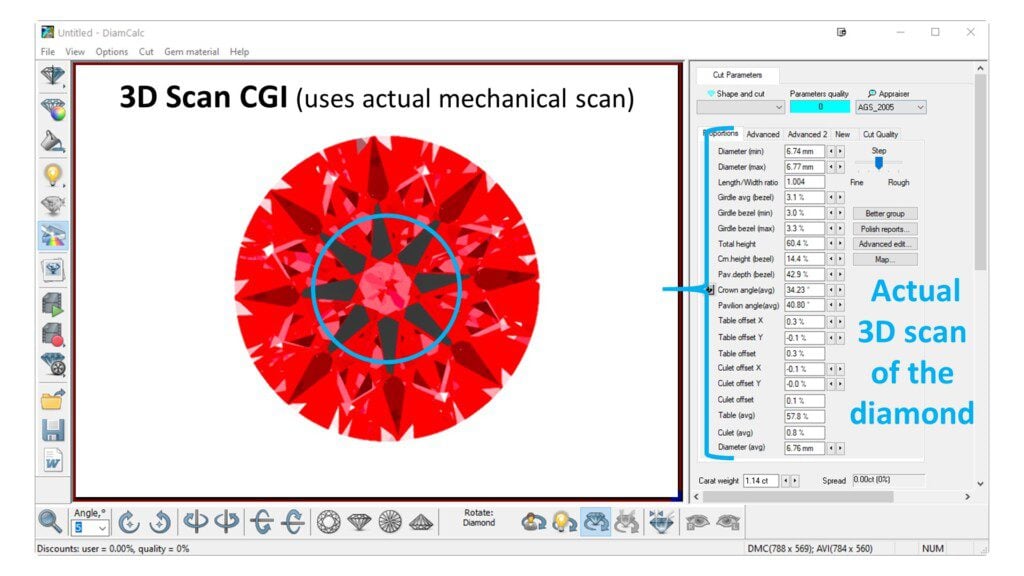
Hearts and Arrows Analysis: Hearts and arrows images generated with a 3D scan may be very close to the diamond’s actual hearts and arrows but are not as decisive as actual photos or in-person viewing. You can read more about optical precision on our Hearts and Arrows Diamonds page.
Important Usage Note
Because computer-generated images have the appearance of actual photos, it is important to verify with the seller if the imagery they are providing is actual photography of the diamond or CGI. If the images are CGI, verify that the seller secured a mechanical 3D scan of the actual diamond.
PriceScope Pointer: Whether intentional or by accident, some diamond sellers provide Ideal Scope, ASET, and Hearts and Arrows simulations from manual input CGI. Those images do not represent the subject diamond and give a false positive impression. Be sure a mechanical 3D scan was used. You might also ask the seller to send you the 3D scan. Common file formats are .SRN .STL .DMC .ASC and DXF./span.
Computer Modeling Strengths
Computer modeling is the most sophisticated method of clinical diamond cut assessment. When imported, 3D diamond scans can reliably and accurately be used to place diamond cut in a performance category such as GIA Excellent or AGS Ideal, and to identify shape subsets such as Super Ideal, PriceScope Ideal and Steep-Deep.
Computer Modeling Shortfalls
3D scans of gemstones are created without any contact. The diamond is placed on a rotary platform surrounded by lights. The lights turn on and the diamond’s silhouette is captured eight times as it rotates. An integrated camera measures the angles of that silhouette. Device makers acknowledge a potential linear error of ± 10 microns and angular error of ± 0.1 degrees per measurement.
Summary
With a high-quality 3D scan, much can be determined about overall diamond cut performance. For extremely nuanced analysis regarding matters like optical precision, or hearts and arrows, it’s best to use actual images or view the diamond in an optical precision scope in person.
Advanced Diamond Cut
Jewelry store spotlights are traditionally set up to make all diamonds appear bright and dynamic. This is much like a car dealer’s showroom, where the various automobiles are positioned and illuminated to best advantage. Like shopping for a car, judgment of a diamond’s performance should not be limited to the showroom, it’s best done when the item is removed from the sales-environment and “test-driven” through the environments it will normally see in everyday wear.

In-Person Viewing – Make Comparisons Like An Expert
Diamonds are traditionally shown to buyers in a single location, typically under spotlights which make all diamonds look good. It’s important to remember that a diamond will look very different as it travels through the world’s infinite panoramas of illumination. Learn how to make thorough comparisons and discover what diamond speaks to you most through different scenarios.
Environmental Variety
If the three “Ls” of real estate are “Location, Location, Location”, the three “Ls” of cut are Lighting, Lighting, Lighting.

Instructions For Thorough In-Person Viewing
A. Setting Up The Diamonds
- If examining 1 loose diamond, use tweezers or a temporary mounting.
- If comparing 2-3 loose diamonds, place them in temporary mountings.
- If comparing more than 3, place them side by side on a white diamond-viewing tray.
- Be prepared to return, with your favorite two in temporary mountings or on your skin.
- If comparing finished jewelry, hold the pieces close to each other.
B. Lighting Definitions
- Spotlighting: Small intense lights overhead. These are seen in every jewelry showroom and most household bathrooms (facilitates brightness-dispersion-scintillation)
- Natural Lighting: Large window or porch area where indirect sunlight/daylight is visible (facilitates brightness-dispersion)
- Diffused Lighting: Fluorescent tubes or diffused indirect light, as in a school classroom or office (facilitates brightness)
- Low Lighting: Darkened room, corner, or other areas where no overhead light exists (reveals leakage)
- Filtered Lighting: Outside area in sunlight under a tree with leaves moving (facilitates scintillation)
C. Prepare Yourself and Other Viewers
- Is someone wearing eyeglasses? They will perceive dispersion and scintillation differently.
- Are there observers over 40? Presbyopia has often set-in, so go ahead and keep the reading glasses on if they want to get close.
- Are there observers under 21? They may detect nuances others do not, as they can focus as close-distance.
- Is someone wearing a yellow or brown shirt? Diamonds reflect their surroundings. They will take on that color appearance in general and in their performance qualities.
Take the tour!
Stop 1: Spotlighting
Start under overhead spotlights as you would see the diamonds in a jewelry store. Compare the diamonds at 18 inches. Hold them still, then move them slowly side to side. Then move them rapidly. Look for overall brightness (white and colored light). Ask which has more white sparkle (isolate glare), which has more colored sparkle, which seems more vivid (more intensity in brightness and darker contrast). Does one have more rapid/small sparkle while another has more broad/large sparkle?

Now move them from arm’s length slowly to very close up. Does one get darker as it comes closer? Do they both remain as bright? Do they both remain as vivid in brightness and contrast? If you’re inclined to take notes, by all means, do, since these comparisons will be made in a few different lighting conditions.
Stop 2: Natural Daylight
Whether near a window or on a covered porch (not under direct sunlight), stand with daylight at your back so the diamonds are illuminated by natural outdoor lighting. Go through the same comparative exercises listed above. If it’s a cloudy day you can expect to see more brightness than fire. If it’s a sunny day the colored flashes should be vivid.
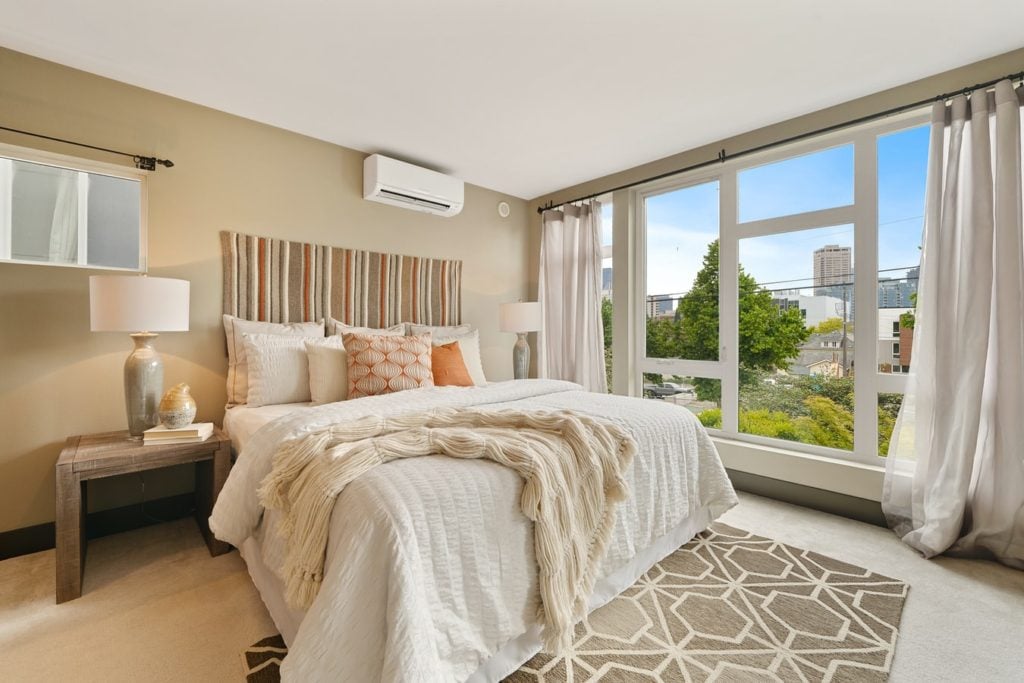
Diamonds and The Sun
The sun is an incredibly bright light source but causes diamonds to look dark for two reasons. First, that diamond is ‘looking’ for light sources from horizon to horizon (180 degrees) but the environment has only one light source which occupies just 1/2 of a degree of sky. Second, bright sunlight causes the pupils of your eyes to constrict, or get smaller. So, while you see the (very) vivid sparkles that a single (very) bright source creates, the constriction of your pupils makes the surrounding areas effectively dark. If you walked into a jewelry store and killed all of the lights except the one you’d get the same result, only the diamond would be even darker, since no jeweler’s spotlight rivals the sun in intensity.
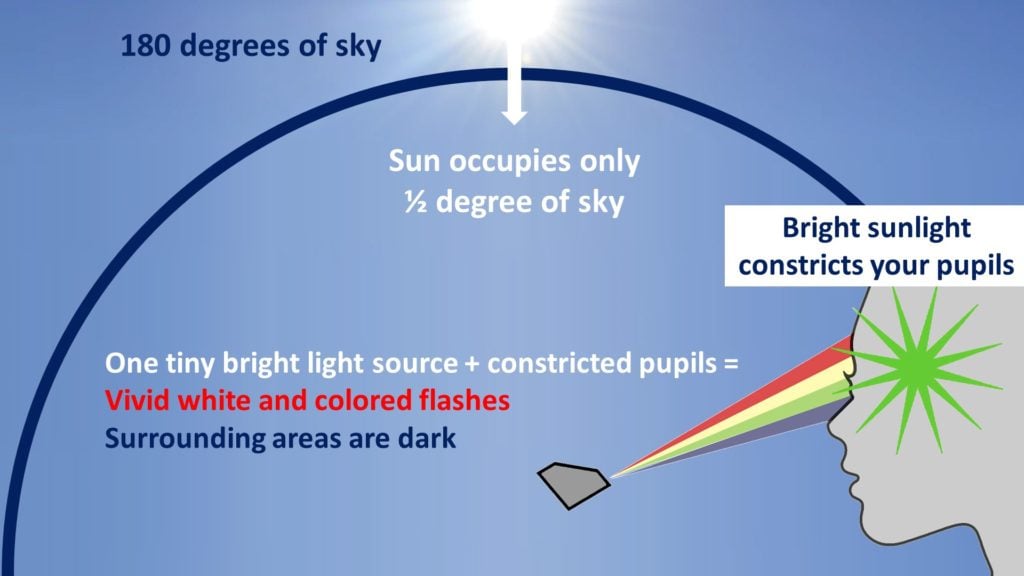
Learn why you see more colored flashes when your pupils constrict on our Diamond Fire and Dispersion page.
Stop 3: Diffused Lighting
If you don’t have specific classroom or office-style lighting you can diffuse overhead lights with a pillowcase or sheet. There should be no spotlights or direct lighting of any kind in this environment. These conditions resemble the diffused northern daylight of a diamond bourse. Much like a cloudy day, you will see little or no fire here. Go through all of the same comparisons, this time focusing on how bright the comparative diamonds remain, and how symmetrical the contest patterns are.
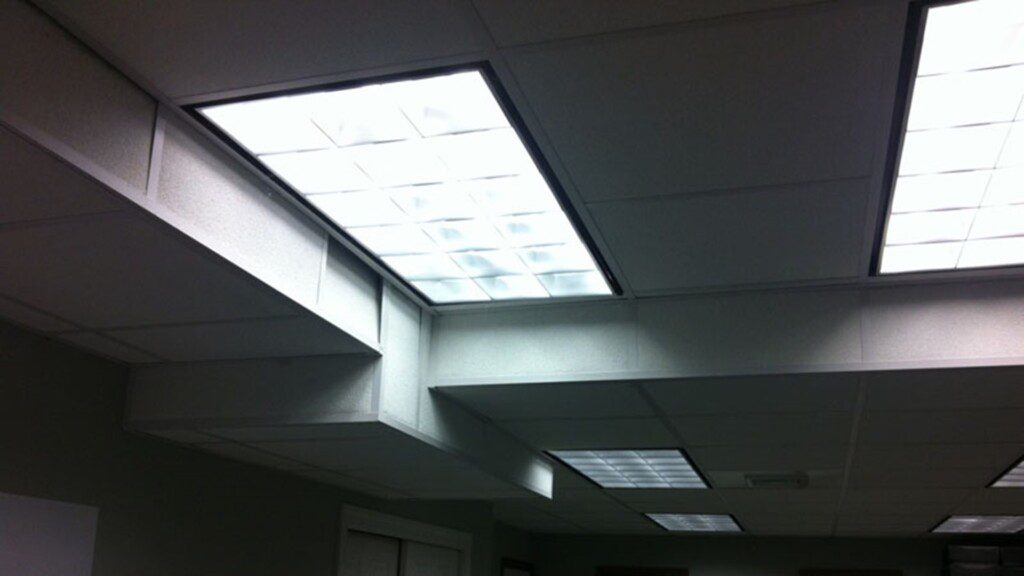
Stop 4: Low Lighting
This can be done under your desk or kitchen counter. No direct light at all is preferred. In a pinch you can cup one hand over the other that is holding the diamond and see how it appears when gathering only the most limited light. A very important test in this condition is to see if either diamond “gets smaller” than the other, or if they both retain their side-to-side size appearance.

A diamond that seems to “get smaller” may not be returning light from edge-to-edge as the finest cut diamonds will – and one where you literally see through the center is leaking light through the pavilion.
Stop 5: Filtered Lighting
Many diamond professionals have discovered the joy of viewing a well-cut diamond on a bright day, but standing underneath a tree where the leaves are moving and permitting sunlight to filter down to the diamond.
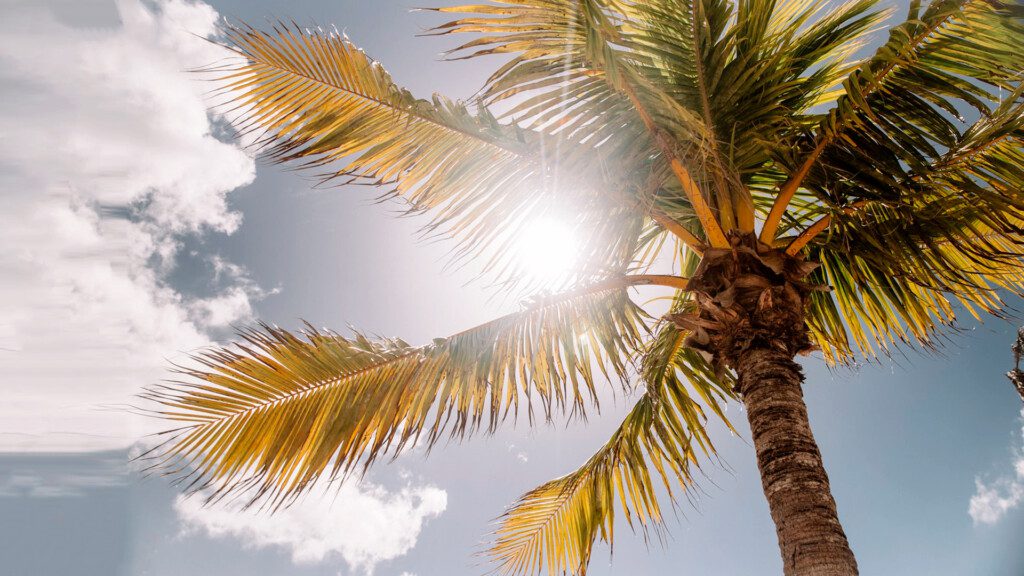
Why is this such a great environment? Ambient sunlight reaches down to the horizon, promoting edge-to-edge brightness, while the leaves break up the cascading sunlight, creating abundant scintillation events. Meanwhile, your pupils have contracted (because your brain registers the sunlight) and in that state they clip abundant dispersive fans, causing your optic nerve to perceive far more colored flashes than you do in other illumination scenarios.
It should go without saying but be sure the diamond is completely secure and will not fall or pop out of the tweezers if you choose to take it outside.
Get fast answers to any question: Ask our community of unbiased independent helpers.


